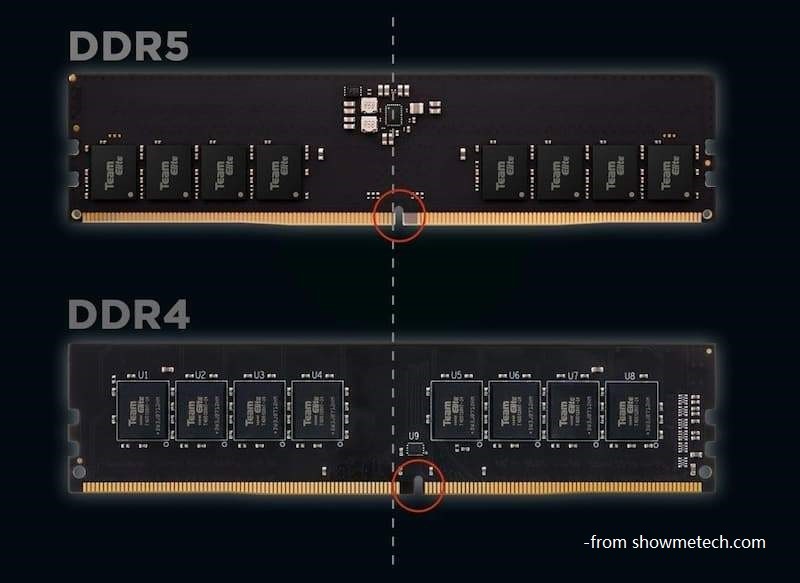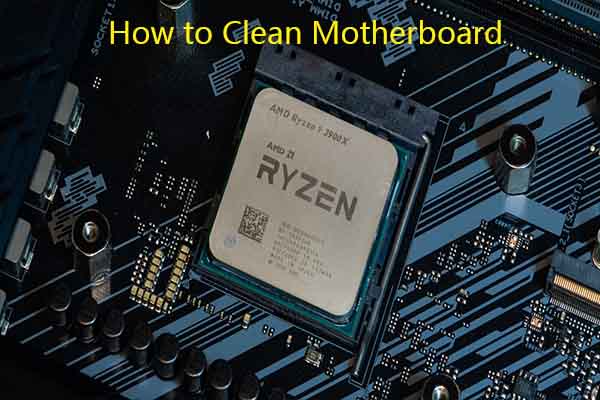DDR is a form of SDRAM (Double Data Rate Synchronization Dynamic Random Access Memory), which was released in 2000. Each iteration of DDR comes with performance improvements over its predecessor. DDR4 vs DDR5: what’s the difference between them? This post will show you the details.
Before that, it offers a brief introduction to DDR4 and DDR5 respectively. You can get an overall understanding of DDR4 and DDR5 by reading the content below.
What Is DDR4 and DDR5
DDR4, released in 2014, is the fourth iteration of DDR memory. It contains great technical improvements based on DDR3. Intel’s 12th, 13th, and 14th generations only support DDR4.
DDR5 is the fifth iteration of memory technology released on July 14, 2020, by the Joint Electronic Device Engineering Council (JEDEC). It promises faster performance and improved power efficiency. To be specific, it doubles the bandwidth and capacity of its predecessor.

DDR4 vs DDR5
DDR4 vs DDR5 RAM: what’s the difference? In this section, we will explore the difference between DDR4 and DDR5 from aspects including memory bandwidth, capacity, and voltage.
#1: Memory Bandwidth
Compared with DDR4, DDR5 has faster transfer speeds and greater potential capacity. The JEDEC spec of DDR4 operates at the speed of 3200Mhz, while DDR5 can run at effective speeds of up to 6400Mhz.
#2: Compatibility
Though Intel’s 14th and 13th-generation processors support both memory standards, compatible motherboards only support one type of memory or the other. DDR4 won’t be supported by the next generation of Intel’s Core processors that might be released in some time of 2025.
AMD abandoned DDR4 support when it released its Ryzen 7000-series processors in late 2022. Moreover, AMD doesn’t support DDR4 on its AMD chips. Most laptops and pre-built PCs come with DDR5 installed. If you consider the future upgradeability of your system, you should prioritize DDR5.
#3: Capacity
In theory, the maximum capacity of DDR5 can be up to 512GB per module. However, most processors and motherboards can’t support that in practice. High-end motherboards like the Gigabyte Aorus Z790 Extreme X support up to 192GB of total memory and 48GB individual memory modules.
As for DDR4, it has much smaller limits. Its maximum memory capacity is 128GB, spread across two to four DIMM modules. DDR4 vs DDR5 RAM capacity: which wins? The winner is DDR5.
#4: Cost
DDR4 is much cheaper than DDR5. DDR4 has been available for over a decade and costs half as much as a DDR5 kit of similar capacity. For instance, a pair of 3200MHz Corsair Vengeance memory modules cost $40 for 16GB of DDR4 memory and $75 for 16GB of DDR5.
Nevertheless, the price parity evens out at higher capacities. For example, a 32GB kit of that same DDR5 Corsair Vengeance RAM costs $100 now. You should note that DDR5-compatible motherboards are more expensive than DDR4-only ones, but not by much.
DDR5 vs DDR4 on price: which to choose? If you have a limited budget, you can select DDR4. If you don’t mind the price, select DDR5.
#5: Voltage
Power regulation and management are integrated into the motherboard for memory on DDR4. As for DDR5, each module has its own PMIC (Power Management Integrated Circuit). Given that fact, DDR5 memory ICs need less power.
Though DDR5 requires lower voltage, it runs warmer than a DDR. So, you need a good heatsink or cooling technology to maintain high performance. DDR5 RAM vs DDR4: which to pick? You can get a conclusion after reading the above content.
Related articles:
How to Upgrade a Gaming PC? Detailed Instructions Are Here
Can You Upgrade a Prebuilt PC? How to Upgrade CPU/GPU/Storage?
Here’s a Full Lenovo IdeaPad Gaming 3 SSD Upgrade Guide
Upgrade DDR4 to DDR5
Is DDR5 backward compatible with DDR4? The answer is No. Since the pin layout of DDR5 is different from the DDR4 motherboard, you can’t use the DDR5 module to upgrade a DDR4 or DDR3 motherboard. You’d better not install a DDR5 module into a DDR4 motherboard DIMM slot or vice versa. Otherwise, you will damage the RAM module itself or the motherboard’s DIMM slot.
To upgrade DDR4 to DDR5, you need to buy a new motherboard that specifically supports DDR5. Then replace the old motherboard with the new one. Please refer to this guide to upgrade motherboard and CPU without reinstalling Windows.
MiniTool Partition Wizard DemoClick to Download100%Clean & Safe
Conclusion
The difference between DDR4 and DDR5 has been shown to you. Now, it’s your turn to make a choice. DDR4 vs DDR5: which to select? The answer varies depending on your situation.



User Comments :